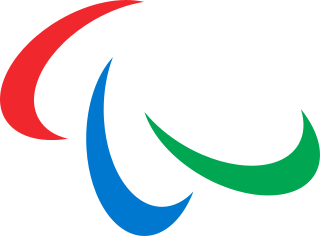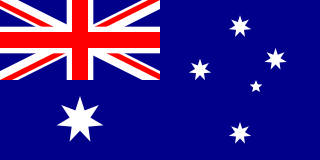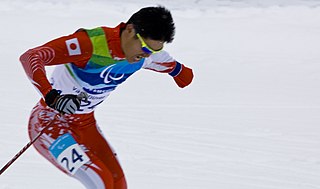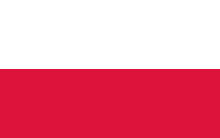
Marit Bjørgen is a former Norwegian cross-country skier. She is ranked first in the all-time Cross-Country World Cup rankings with 114 individual victories. Bjørgen is also the most successful sprinter in Cross-Country World Cup history, with 29 victories. She headed the medal table at the 2010 Winter Olympics by winning five medals, including three gold. A five-time Olympian, her five Olympic medals at the 2018 Pyeongchang Games brought her total number of medals up to a record 15, making her the most decorated Winter Olympian of all time and the third-most decorated Olympian of all time.

Para biathlon is a winter sport that combines target shooting and cross-country skiing. It is a race with contestants alternating between skiing through a cross-country trail and shooting at targets; missed shots result in a penalty of either extra time or extra distance. Para biathlon includes standing events, sitting events, and events for athletes with visual impairments, and has been a Paralympic sport since 1988.

Paralympic cross-country skiing is an adaptation of cross-country skiing for athletes with disabilities. Paralympic cross-country skiing is one of two Nordic skiing disciplines in the Winter Paralympic Games; the other is biathlon. Competition is governed by the International Paralympic Committee (IPC).

Katarzyna Rogowiec is a Polish Paralympian. She won two gold medals at the 2006 Winter Paralympics in Turin in cross-country skiing, and also competes at the highest levels in biathlon.

The Women's sprint cross-country skiing competition in the classical technique at the 2010 Winter Olympics in Vancouver, Canada was held on 17 February at Whistler Olympic Park in Whistler, British Columbia.

At the 2010 Winter Paralympics in Vancouver, British Columbia, Canada, Australia sent 11 athletes to compete against the other participating 42 nations. The delegation consisted of 3 sighted guides and 17 support staff. This was the largest delegation Australia had sent to a Winter Paralympics. Australia has participated in every winter Paralympics since its conception.

The United Kingdom of Great Britain and Northern Ireland competed at the 1992 Winter Paralympics held in Tignes and Albertville, France. The team was known by it shortened name of Great Britain, for identification purposes.
Thomas Oelsner is a retired German Paralympic Nordic skier who won multiple gold medals throughout his career. He was the first person to fail a drugs test at the Winter Paralympic Games and was stripped of two gold medals. After he served his ban he returned to competitive skiing and participated in the 2006 and 2010 Games.
LW12 is a para-alpine and para-Nordic sit skiing sport class defined by the International Paralympic Committee (IPC). An LW12 skier needs to meet a minimum of one of several conditions including a single below knee but above ankle amputation, monoplegia that exhibits similar to below knee amputation, legs of different length where there is at least a 7 centimetres difference, combined muscle strength in the lower extremities less than 71. For international competitions, classification is done through IPC Alpine Skiing or IPC Nordic Skiing. For sub-international competitions, classification is done by a national federation such as Alpine Canada. For para-alpine, this class is subdivided into two subclasses.: LW12.1 and LW12.2. A new sit-skier competitor with only national classification will compete as LW12.2 in international competitions until they have been internationally classified.

LW11 is a para-alpine and para-Nordic sit skiing sport class, a classification defined by the International Paralympic Committee (IPC for people with paralysis in the lower extremities and people with cerebral palsy that affects the lower half of the body. Outside of skiing, the competitor in this class is unable to walk. For international competitions, classification is done through IPC Alpine Skiing or IPC Nordic Skiing. For sub-international competitions, classification is done by a national federation such as Alpine Canada.

LW10 is a para-alpine and para-Nordic sit-skiing classification for skiers who cannot sit up without support. For international skiing competitions, classification is conducted by IPC Alpine Skiing and IPC Nordic Skiing, while national federations such as Alpine Canada handle classification for domestic competitions.

Brazil sent a delegation to compete at the 2014 Winter Paralympics in Sochi, Russia, held between 7–16 March 2014. This marked the country's first entry into the Winter Paralympic Games. Brazil sent two athletes, snowboarder Andre Pereira in Alpine skiing and Fernando Rocha in cross-country skiing. The country's best performance in any event was 15th, achieved by Rocha in the 15 km sitting competition.

Mongolia sent a delegation to compete at the 2014 Winter Paralympics in Sochi, Russia, from 7–16 March 2014. This was Mongolia's third time participating in a Winter Paralympic Games. The delegation consisted of a single cross-country skier, Batmönkhiin Ganbold. His best performance in any event was 14th in the men's standing 20 kilometer freestyle, he finished 31st in the 10 km event, and did not advance from the qualification round of the 1 km sprint.

South Korea competed at the 2002 Winter Paralympics in Salt Lake City, United States. 6 competitors from South Korea participated, all in the Alpine Skiing event. Sang Min Han won the nation's only medal, clinching the silver in the Men's Giant Slalom LW12 event in Alpine Skiing. Han would go on to represent South Korea at the 2006, 2010, 2018, and 2022 Winter Paralympics.

Poland competed at the 1998 Winter Paralympics in Nagano, Japan. 26 competitors from Poland won 2 medals, both bronze, and finished 21st in the medal table.

Poland competed at the 1994 Winter Paralympics in Lillehammer, Norway. 15 competitors from Poland won 10 medals including 2 gold, 3 silver and 5 bronze and finished 12th in the medal table.

Poland competed at the 1992 Winter Paralympics in Tignes/Albertville, France. 13 competitors from Poland won 5 medals, 2 gold and 3 bronze, and finished 10th in the medal table.

Yoshihiro Nitta is a Japanese Paralympic cross-country skier and biathlete. He is regarded as one of the most experienced Japanese Paralympic competitors as he went onto represent Japan at the Paralympics in 1998, 2002, 2006, 2010, 2014, 2018 and 2022. Yoshihiro Nitta has clinched 4 medals in his Paralympic career including 2 gold medals at the 2010 Winter Paralympics. He achieved his 4th Paralympic medal in his career and the first medal since the 2010 Winter Paralympics after claiming a silver medal in the men's 1.5km sprint classic standing cross-country skiing event during the 2018 Winter Paralympics.

Poland competed at the 1988 Winter Paralympics in Innsbruck, Austria. 13 competitors from Poland won 8 medals and finished 12th in the medal table.

Poland competed at the 1984 Winter Paralympics in Innsbruck, Austria. 16 competitors from Poland won 13 medals and finished 9th in the medal table.














